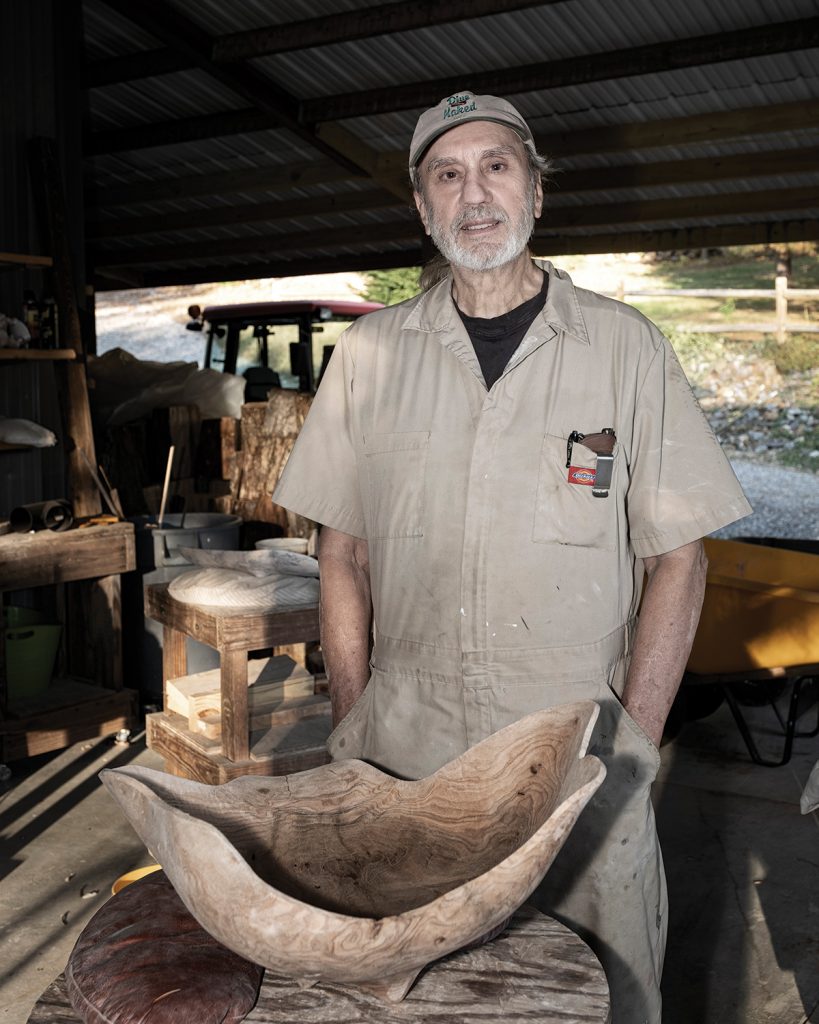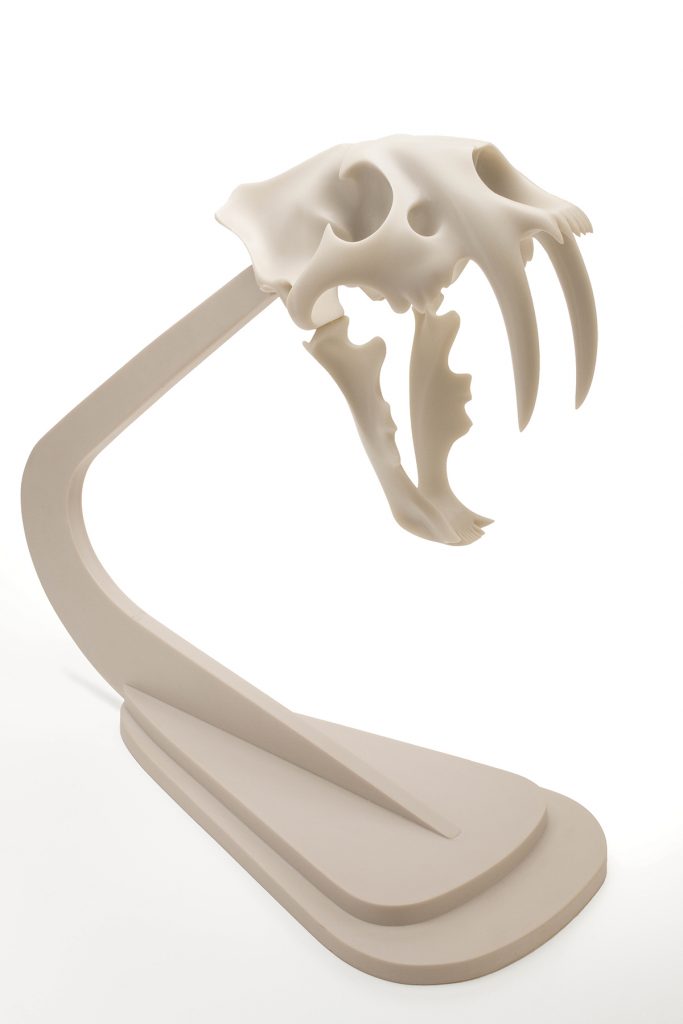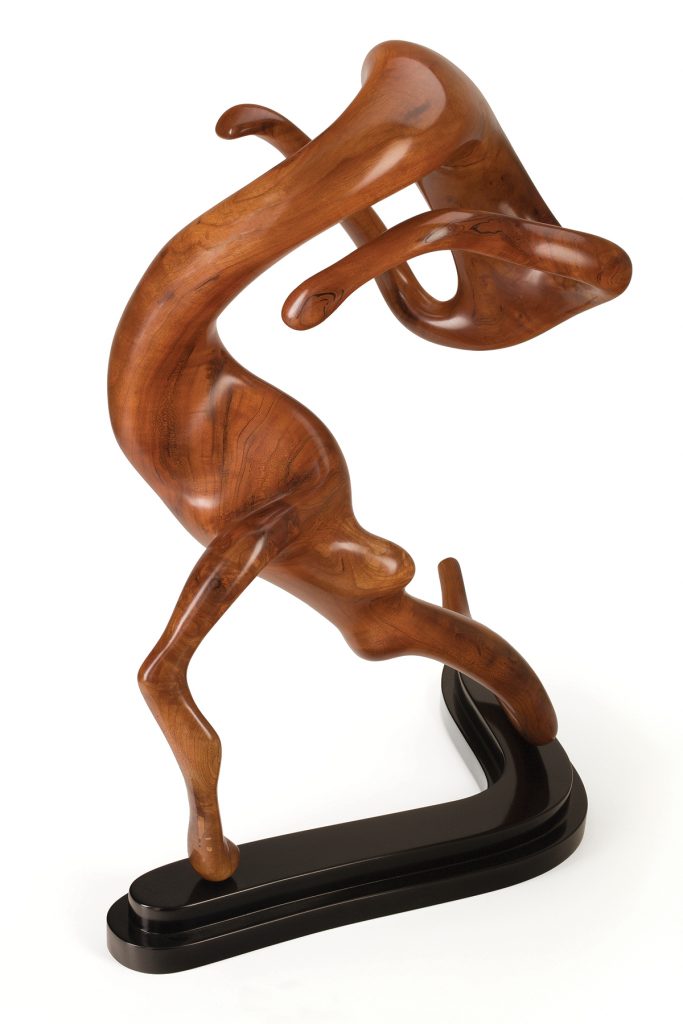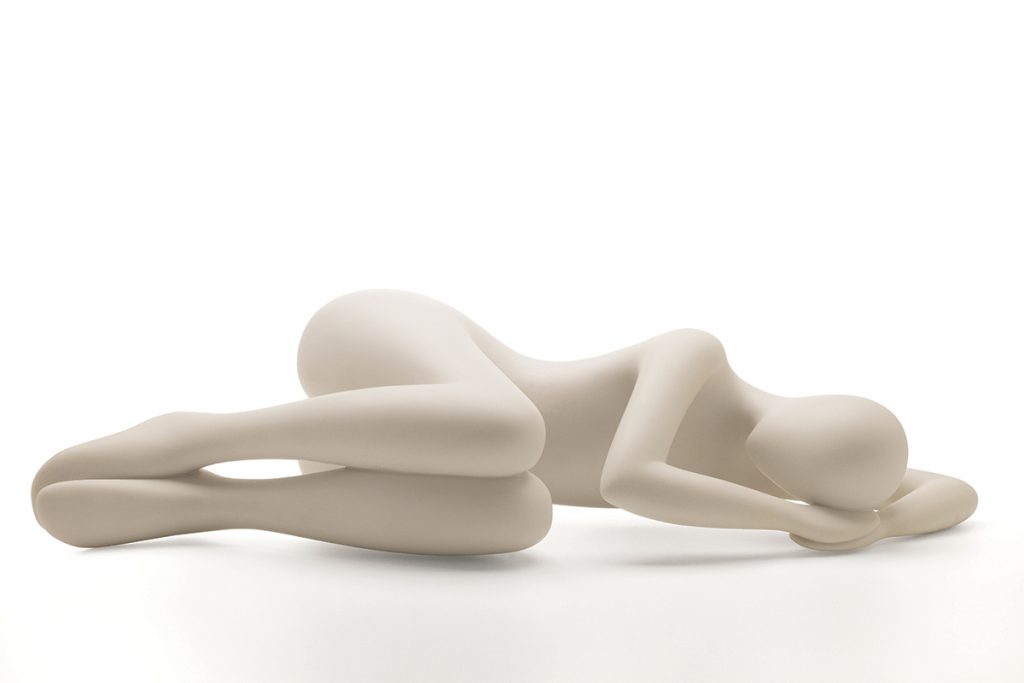
Richard Flottemesch is concerned with what’s inside.
Portrait by Dan Foley
By the time Richard Flottemesch decided to make art his life’s work, in his junior year at the University of Maryland, the Baltimore native had already served four years in the Navy and was qualified to calibrate and maintain precision instruments. He worked for an electronics company in Iceland and at the U.S. government’s White Sands missile range in New Mexico; along the way, he earned his private pilot’s license.
None of this seems directly relevant to the exquisitely crafted wood and stone sculpture for which Flottemesch has since become known, but for the Asheville artist, life and art are much the same thing. And it was his time at university that closed whatever gap might have existed between the two.

“I had to decide direction,” Flottemesch says. “But because I had so much technical background, I didn’t know whether to [major in] engineering or art.” A college counselor suggested he enroll in both tracks, to test the waters. The drawing course stuck, though a negative experience with studio instruction eventually led Flottemesch to quit that department. But his natural talent prompted a recommendation from an art-history teacher, and he subsequently entered the prestigious Maryland Institute of Art.

Fifty years on, that talent has produced a body of lustrously finished figurative sculpture in wood — mostly cherry, birch, maple, and walnut — and in bronze, alabaster, and marble. Many of the bronze pieces are recreations of ones originally crafted in wood, in particular an idealized female figure resting on one side in a semi-fetal position, arms folded under her head. She appears in both warm cherry wood and in cool, marble-filled resin. Other works are abstracted, dynamic forms recalling the Futurist art of the early twentieth century, particularly the etiolated forms of Brâncusi. Those influences are brought to the pieces by the viewer, however: While Flottemesch admits extensive reading about seminal artists of the Western canon, he claims no affinities with any of them.
“I can’t say I’ve been influenced by anyone in particular,” he notes. “It just depends on how well the artist is able to convey the subject, whether human or animal. Some are able to show what’s inside, others not so much.”

Although his first sculpted works were in wood, Flottemesch apprenticed at the famed Seward Johnson Atelier foundry in New Jersey to learn bronze casting and related skills such as wax and metal chasing, and was exposed to carving in stone at workshops in New Mexico and the Midwest. His self-education continued with a one-month internship in 2017 with the noted Italian sculptor Pasquale Martini at Martini’s Tuscan workshop and gallery.

“It was a remarkable experience, living with an Italian family in a small town in Tuscany, near where Da Vinci and Michelangelo were from,” he says. Martini, whose complex and abstract pieces combine sharp angles, geometric forms, and delicately layered sections, took an old-school approach: He merely told Flottemesch to pick a block of stone and get to work. “He set me up in a spot outside his studio, and I started carving with no idea where it would go.”
Flottemesch has used quarantine time to explore even more forms, including welding and glass casting. But he predicts a return to his roots. “This season,” he says, “I will begin painting and drawing again.”

Richard Flottemesch, Cast Light Studio, Asheville. For more information, see richardflottemesch.com.